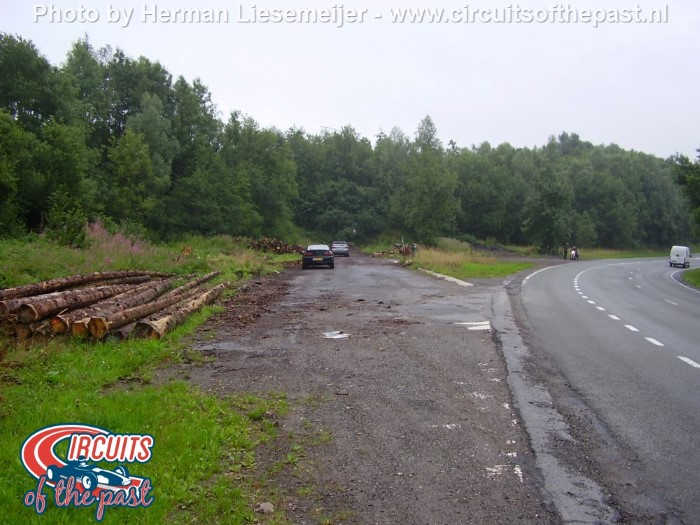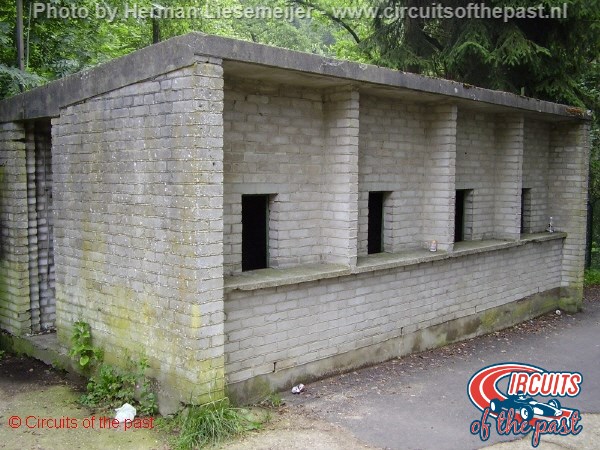Change language: Dutch (Nederlands) ![]()
In this article I tell you the history of the beautiful Spa-Francorchamps circuit. A classic on the Formula One calendar and beloved for its huge elevations and fast corners…
The history of the Spa-Francorchamps circuit
Together with the old Nürburgring, the Belgian Spa-Francorchamps circuit is one of the few old style race tracks that still exists. And it belongs to the most beautiful circuits in the world!
Back in 1896 there where races in the Belgian Ardennes and from 1902 they raced at a closed part of the public road. This also was the first time a public road get closed for motor racing!
In this time they drove year by year at different lay outs and the longest was 118.1 km (73.8 Miles)!

In the early twenties the “La Meuse” newspaper owner Jules de Thier and chairman of the Royal Automobile Club Belgium Langlois van Ophem came at the idea to use the triangle Francorchamps – Malmedy – Stavelot for motor racing. The Spa-Francorchamps circuit was born.
The first ever car race that should take place in 1921 at the 14,982 km (9.31 Miles) long circuit was cancelled because there was a lack of competitors, just one registration! The first race that took place was a motorcycle race in 1922.

In 1924 the first edition of the 24 hours of Francorchamps took place one year after le Mans. And in 1925 the first Grand Prix was held, the GP of Europe, which was won by Antonio Ascari, the father of Alberto.

The layout of the old Spa-Francorchamps circuit
The layout of the 14 Km. (8.75Miles) long street circuit was characterized by fast sweeping corners and huge elevations. Actually there where only 3 slow corners from which only La Source remained. The others where l’Ancienne Douane and Stavelot.
In 1939 a spectacular new corner cut off l’Ancienne Douane, with the goal to make the Spa-Francorchamps circuit one of the fastest in Europe. The name of that corner was Raidillon.

This horrendous fast and very steep Raidillon is attached to the remains of the old Eau Rouge corner, the left-hander which was originally the connection to the l’Ancienne Douane hairpin. Today many people call the Raidillon by mistake Eau-Rouge (See the article “Eau Rouge or Raidillon?” for more information).

You can see that the left-hander was original longer.
During World War Two there were no races. But from December 1944 to January 1945 the Spa-Francorchamps circuit was in the middle of the Ardennes Offensive.

The first post war races have been held in 1947. The lay out was changed a little bit from that year, because the intersection at Stavelot was cut off by a new fast and slightly banked corner. The pre war trend to make Francorchamps one of the fastest circuits was continued with this modification.
More about the layout of the Spa-Francorchamps circuit in the article “A lap at old Spa-Francorchamps“.

The new banked Stavelot Corner
Malmedy Chicane
The Malmedy Chicane was mainly used in the pre-war version of the track. First from 1921 to 1929. Than from 1934 to 1939. After World War Two the chicane was initially not used anymore, because of the trend to make the circuit faster.
But at the end of the sixties safety became an issue. The fast Spa-Francorchamps circuit came under criticism for it’s lack of safety, which resulted in the reuse of the Malmedy Chicane in 1970 for certain race classes.

About the use of the Malmedy Chicane during the 1970 Formula One Grand Prix are the stories contradictory. Some sources tell the chicane was tested during practise but found too dangerous and not used during the race. But footage of the 1970 Belgian Grand Prix shows that it was also used during the race itself.
They probably mixed up two cases. It seems that the Malmedy Chicane was not used during the 1970 edition of the 1000 Kilometres of Spa-Francorchamps. Moreover, there was another chicane which was tested for the 1000 Kilometres of Spa-Francorchamps but not used…
Masta Chicane

For the 1975 edition of the 1000 Kilometres of Spa-Francorchamps the organizers were looking for a safer alternative for the feared Masta Kink and decided to build a chicane. But when the Masta Chicane was built and tested they came to the conclusion that it was much more dangerous than the original Masta Kink.
So the Masta Chicane was never used for its purpose. Today it is a parking along the public road.
Formula One at the Spa-Francorchamps circuit
Since 1950 the Belgian Grand Prix was counting for the Formula one World Championship which was introduced hat year. Until 1970, except in 1957, it was held at the old Spa-Francorchamps circuit.
Like usual, beautiful circuits are mostly dangerous circuits. The most exuberant parties in Formula one where after the Belgian Grand Prix if everyone had survived the race at the Spa-Francorchamps circuit!
But after some grave incidents the track was found too dangerous by the drivers and the Belgian Grand Prix was moved to Zolder and Nivelles.

The new Spa-Francorchamps Circuit
The only way for the Spa-Francorchamps circuit to get the Belgian Grand Prix back was to build a new track. Different proposal lay outs where designed. The goal was to preserve the old character of the track while the most dangerous sections should disappear.
They opted for a new section between Les Combes and Blanchimont, which reduces the length to almost 7 kilometres. Moreover, the Kemmel section, which originally contained a series of fast kinks, was straightened making it the famous Kemmel Straight. The new track opened in 1979 and in 1983 the Formula one came back to the Spa-Francorchamps circuit.

One of the most beloved section of the new Spa-Francorchamps circuit is the double left-hander Pouhon. Here during the Belgian Grand Prix in 1997.
The aim was to alternate the Belgian Grand Prix between the Flemish Zolder and the Walloon Spa-Francorchamps circuit, just like between Zolder and Nivelles in the early seventies. But since 1985 the Grand Prix stayed at the new Spa-Francorchamps circuit.

The old Spa-Francorchamps circuit today
Since 2000 the new part is a permanent circuit. To make this possible a new public road was built around the Spa-Francorchamps circuit. They called this new road “Route du Circuit“.
The old part is still accessible and is almost in original state. Only the Masta Straight is now interrupted by a small detour to connect to a roundabout.
The dead end section from Stavelot to Blanchimont was neglected and in a very bad condition for years. But nowadays it serves as a gateway to the kart track and the infield of the current circuit, and has a brand new surface.

© Text & photos: Herman Liesemeijer
Subscribe to our YouTube Channel: youtube.com/circuitsofthepast



